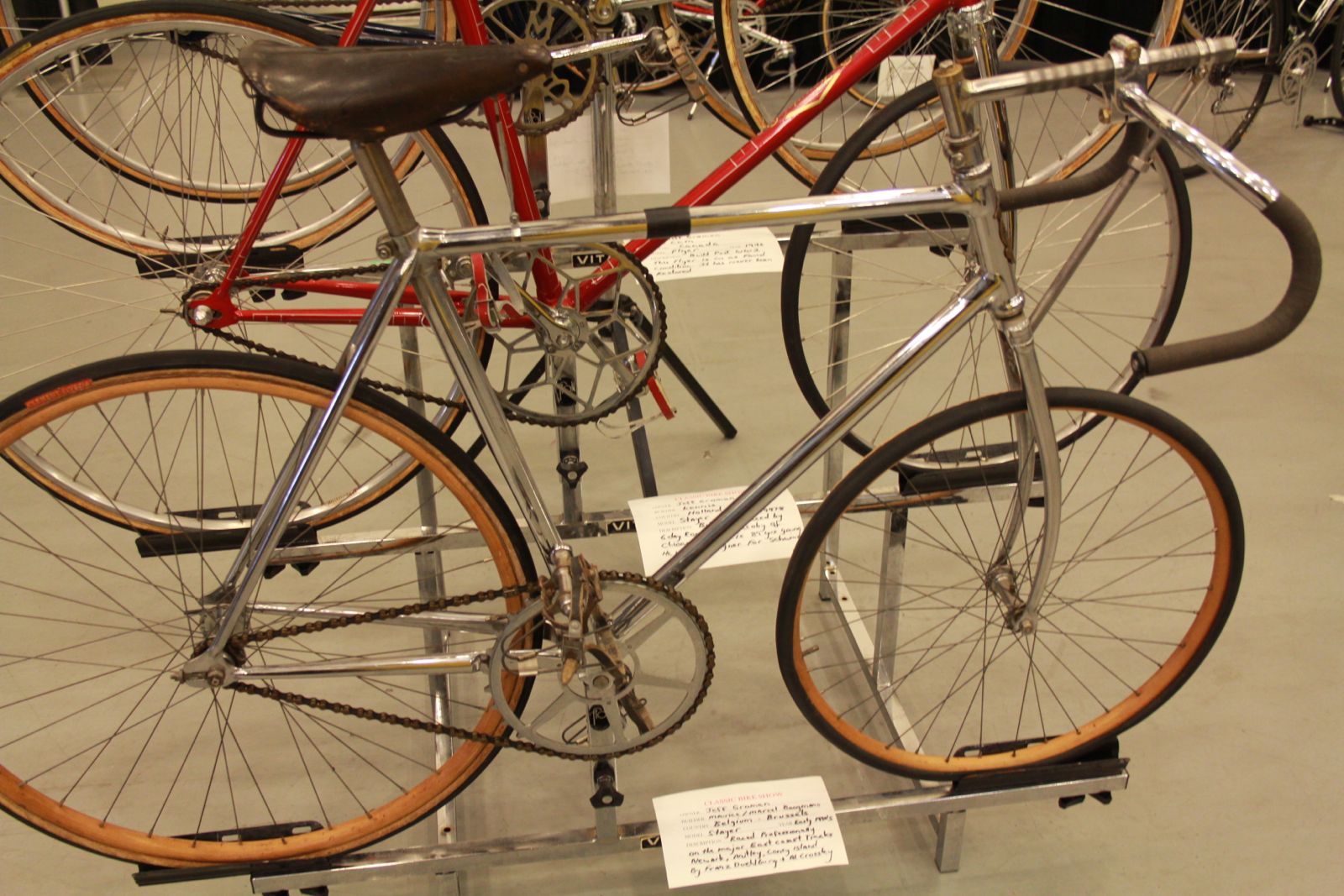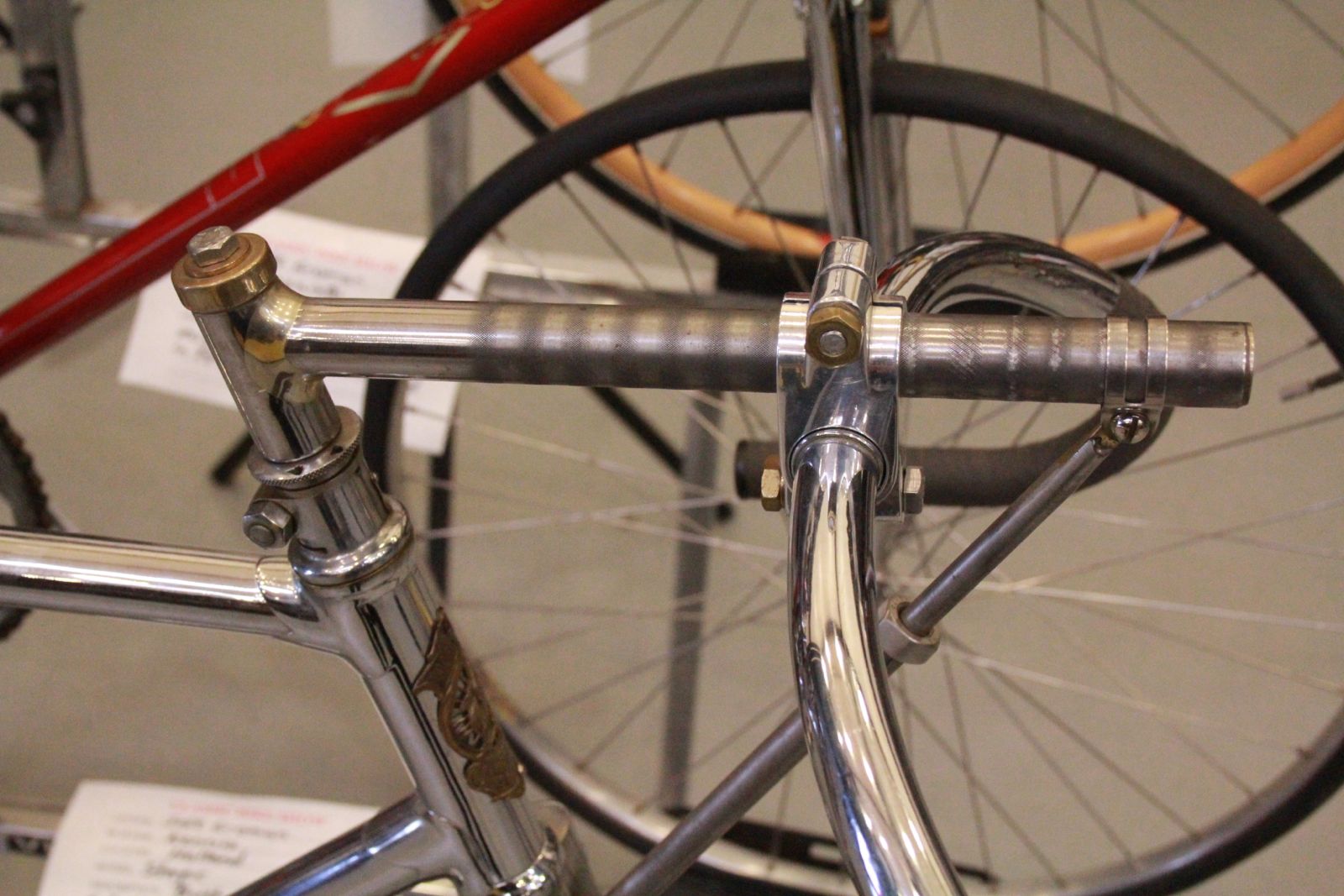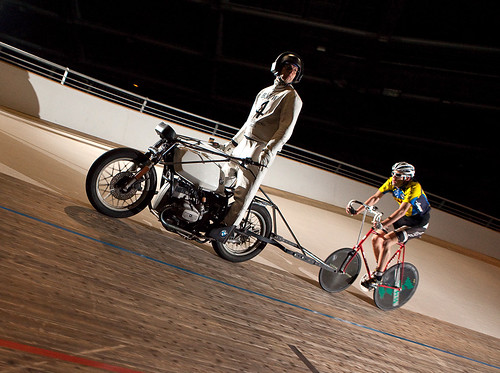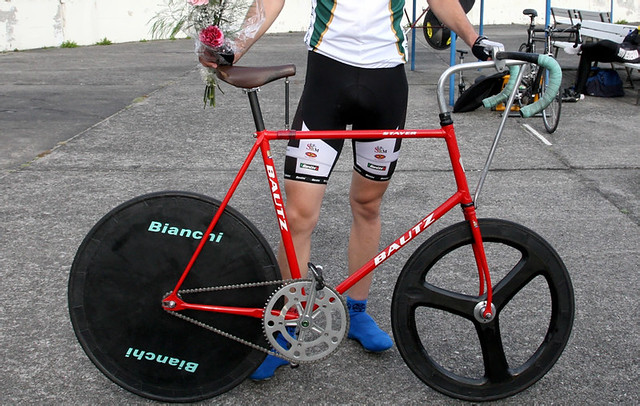At the Seattle Bike Expo this past weekend, there is a classic bicycle show in which the local vintage bicycle collectors bring out some choice items from their personal collections. To be perfectly honest, I’m much more of a modern technology fan. However, I am fascinated by inter-war track bikes, especially machines associated with six-day racing and stayer racing.
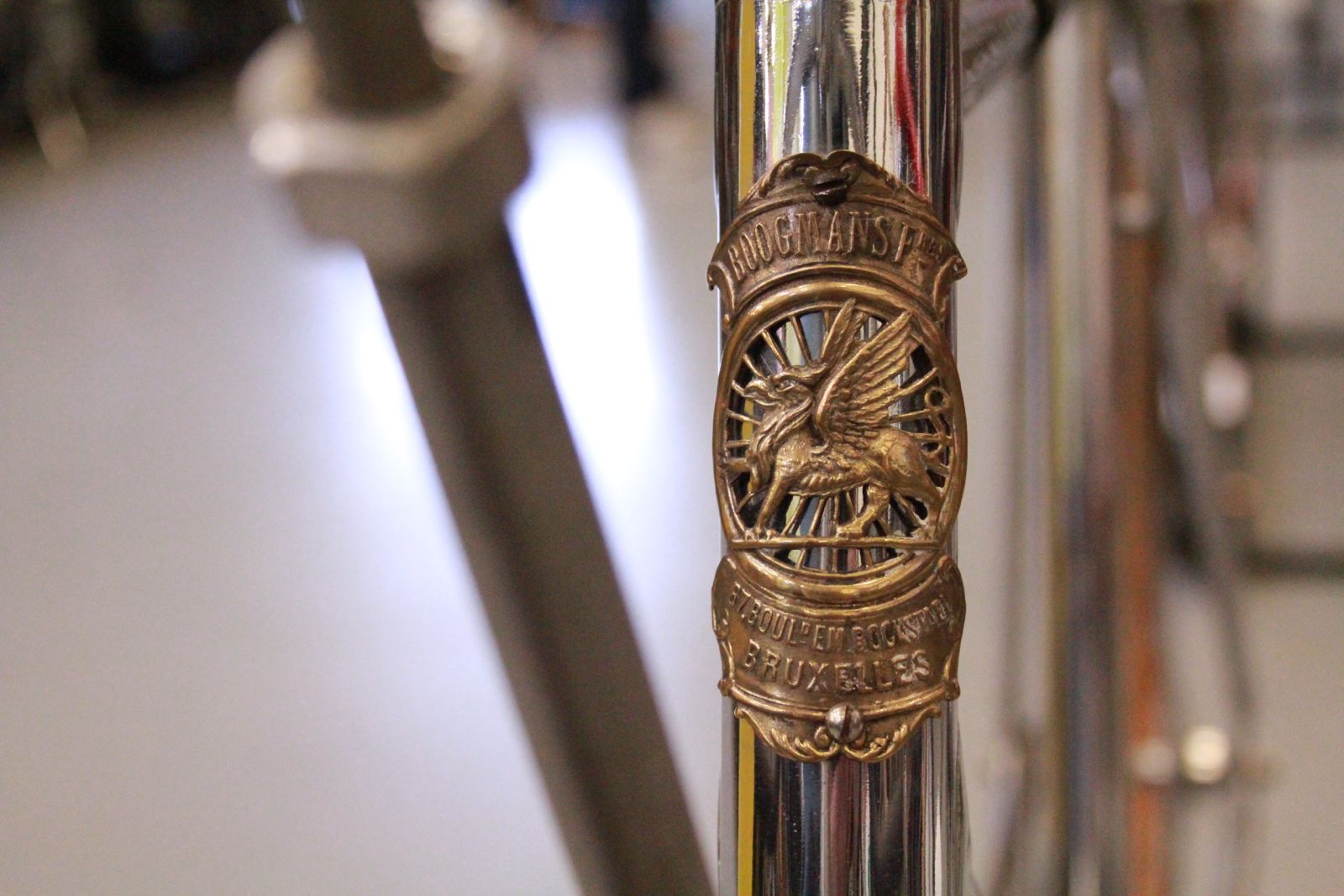
What is stayer racing? It is motor-paced racing on a velodrome. Before automobiles and motorcycles, bicycles were about as fast as any vehicle. In the later 1800s, there were paced races on the velodrome, but the pacers were multi-rider tandems providing drafting for single rider bikes. Sometimes the tandems had as many as six riders. But just like the industrial revolution, machines proved more cost effective than human labour…and faster. By the turn of the century, velodromes long evolved from glorified horsetracks to indoor arenas, and the velodromes banking had become steep to match the tighter radius of the turns. This made stayer racing among the most exciting and dangerous of all sports.
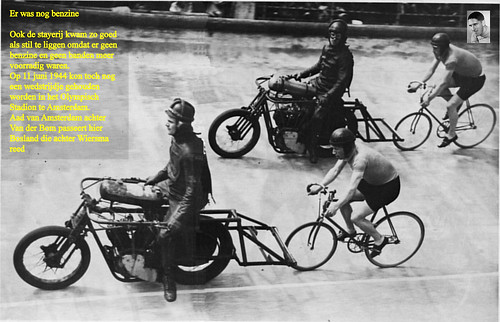 (image from letterlust’s flickr)
(image from letterlust’s flickr)
By the 1900s, bicycles for stayer racing had been refined to meet the unique requirements of the discipline. First and foremost is a small (typically 24”) front wheel and a reverse rake fork. This is for aerodynamics, but not in the way that time trial and pursuit bikes in the 1980s-1990s used small front wheels and cowhorn bars to lower the height of the bike. Rather, the stayer’s short front-center and small wheel allowed the rider to draft a little closer to the moto, but the handlebar sat high to facilitate maximal breathing and leverage. Saddles might overlap the bottom bracket so that the rider’s body leaned a little further forward, and the handlebars were positioned far forward as well. To eliminate flex and above all else possibility of failure, both the saddle and stem required support struts.
The motos used for stayer racing were specialized as well. These were not bicycles with a tiny engine mounted (what is called “derny”), but rather real motorcycles (750cc to 2500cc engine displacement) built to allow the motorcyclist to create a draft for the bike rider behind him. Moto drivers, or pacers, sit bolt upright or even stand during the race, with long, swept handlebars to make it possible to sit all the way back on the moto. This allowed the pacer to create a pocket of draft as big and as close to the rider as possible. Off the back of the moto, a small roller bar is positioned a regulation distance; as a safety feature the roller spins freely should the drafting rider bump into it. The races are typically middle to long distance (compared to other track events). The pacer more or less determines the race, with the rider trying with all his might to stick tight in the draft. A rider who loses the shelter behind his pacer will be swallowed by wind resistance and quickly fall of the pace. The pacer will need to slow way down for his rider to catch back on and then slowly accelerate without losing his rider again. Race speeds frequently average 60-70 kph for 100km, with bursts of over 100 kph (60mph) possible. One can easily imagine how dangerous this can become on small track with multiple teams of riders and pacers, and true to expectations there have been numerous deaths of both riders and pacers as well as 9 spectators in Germany 1909, when a moto careened off track into the bleachers.
What about stayer racing today? Paced events more typically use dernies today and outside of Europe, and the last UCI-sanctioned world championship for stayer racing was almost 20 years ago. But high-level stayer racing still occurs in Europe, much like six-day racing. In fact, stayer racing is frequently held as an event within the schedule of the modern six-day. The bikes still look much like the 1930s Belgian-made Boogmans stayer that I saw this weekend, but that chromed frame and wood rims are really sexy.
Below is a video from a Steherrennen during the Berlin 6-Day last year. Watch for the rider to lose the draft at 2:15. He’s shouting and gesticulating to get his pacer to slow down, but they’ve already lost several places.
(images below from Christian P’s flickr)
Update 2013.03.12
I found this description of the motorcycles and stayer racing on a messageboard:
Basically, the rear subframe (of the motorcycle) is modified, rearsets (after a fashion) attached, the seat is angled at about a 30 degree downward angle (essentially to support in an aft as much as lower aspect), and handlebar extensions to allow the driver to stand upright while operating the motor. The roller extension is to limit how closely the rider can draft the motor for safety reasons. The roller is extended farther from the motor on smaller tracks to limit the speed the riders can achieve/maintain.
I’ve never found motorpaced racing to be especially interesting, but then again, the only motorpacing I’ve witnessed are the hour long races during the Worlds. Passing occurs on a significantly decreased basis, and there is no peloton to speak of (usually less than 10 rider/motor combos on the track at a time, all spread out over the track). The interesting parts come when one rider makes an attack and the rider ahead of him lifts his speed to prevent it. Because the speeds are higher than unpaced riding, the passes are more gradual. Occasionally you will see one driver twist his body in order to angle the wind and direct it onto the other rider in an effort to blow him off his motor. Usually one or two riders will go so hard that they blow up and lose contact with their motor. The consequences of that are dire, because it takes at least several laps for the rider/motor combo to get together again. The motor driver often doesn’t realize immediately when the rider pops, and the rider, who is blown for the moment, cannot possibly push the huge gear in order to keep up with the motor.
The nastiest motorpace crash I ever saw was during the ‘93 worlds when the driver for Antonio Fanelli went high to pass another team and hit the balustrade with the roller extension on the backstretch. He fishtailed and lowsided the motor and Fanelli slammed into the back of them. There were wood chips flying everywhere from the gouges on the track; it looked like a lumberjack chainsaw championship on OLN. Amazingly, Fanelli only suffered from abrasions (and probably enough splinters to start a campfire) and was back on his bike an hour later when they did a restart.
…We're riding townies, adventure, and mountain bikes. Find recommendations on our store page. As Amazon Associates we earn from qualifying purchases.
